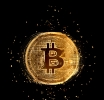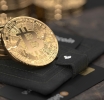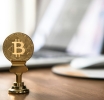What is a decentralized autonomous organization (DAO)?

When we think of automation as a way to improve productivity and process quality, we think of robots on the production line and usually don't think of decision making. Why? Decision making requires complex intelligence with multiple variables, as opposed to repetitive tasks.
This is why management functions in organizations remain the privilege of humans, but they are beginning to be threatened by the birth of artificial intelligence.
Corporate decision-making is a common problem affecting a wide range of public and private organizations.
Blockchain technology opens up new ways to share value and information while automating complex processes in a transparent and secure way.
This is why management functions in organizations remain the privilege of humans, but they are beginning to be threatened by the birth of artificial intelligence.
Corporate decision-making is a common problem affecting a wide range of public and private organizations.
Blockchain technology opens up new ways to share value and information while automating complex processes in a transparent and secure way.
What is a DAO?
A Decentralized Autonomous Organization (DAO) is a system that operates fully and autonomously over a blockchain protocol according to rules encoded with smart contracts. Requiring no human intervention or centralized coordination, DAOs are often referred to as trust-free systems.
With cryptographic instructions that are automatically executed when predefined conditions are triggered, DAOs provide levels of transparency, cost savings and decentralized decision-making that were previously unattainable.
The genesis of a DAO is to align the incentives of stakeholders, from founders to shareholders (with management tokens), users and the community at large.
The structure of a DAO
A DAO is an organization, that is, an ordered system in which people with different roles, responsibilities or positions coexist and interact to achieve a specific goal.
To create a sustainable and autonomous DAO, it is important to understand the incentives and that they are set up correctly in smart contracts, because any initial error or overlooked detail can destabilize the project.
Then funding is needed to be able to work. DAO smart contracts need to create and distribute some internal property, such as a proprietary token that can be spent by the DAO, used in voting mechanisms or to incentivize certain actions. From there, individuals or entities interested in participating in DAO growth can purchase their own voting token.
I just described the monetary policy or tokenomics required for autonomous growth.
Once the DAO gets enough funding to deploy, all of its decisions are made by consensus vote. As a result, all token holders become stakeholders who can make suggestions about the future of the DAO and how its funds are spent.
The second structural concept of DAO, in addition to autonomy, is decentralization, which can be understood as a process of reducing or avoiding the concentration of power and resources in a few entities for decision-making.
In the past, decentralization was usually achieved through legal agreements, such as a cooperative charter or antitrust laws. DAOs use a combination of economic incentives and programmable rules to encourage decentralization.
A prime example of the lack of decentralization is the unequal distribution of tokens, where a very small number of participants can block or approve any proposal or decide to change the code on the DAO protocol.
To better understand the importance of decentralization, a decentralized financial platform (DeFi) is not fully decentralized unless it has governance implemented as a DAO, because developers can make unilateral decisions that affect operations, which means a loss of decentralization.
A related problem with decentralization is scalability because it affects the speed of decision making. A structure with too many decisions and checks implies problems of scale, and a structure with too few implies less autonomy. Because a consensus vote is required to change the code or structure of a DAO smart contract, attackers can exploit a bug or design flaw before DAO stakeholders can collectively solve the problem.
This scalability can be achieved by splitting the organization's decision-making into different DAOs that separately participate in various secondary decisions. This would also benefit from decentralization of decisions. It would be a kind of DAO compatibility with protocols running in parallel, and then validation of the decision-making system in the primary protocol.

What is a decentralized autonomous organization (DAO)?
History of the idea
While it is true that Ethereum has applied this concept with a blockchain-based design, the idea of the DAO originated much earlier.
This groundbreaking idea was originally suggested by Werner Dilger, a renowned German computer science professor, who in 1997 published "Decentralized Autonomous Organization of an Intelligent Home on the Principle of the Immune System" . In it, Dilger defined the basis of the DAO as a self-sustaining and autonomous system, a work undoubtedly ahead of its time. However, at the time his idea was impractical. The technical problem of creating a DAO could not be circumvented until the advent of blockchain.
It was then that the DAO concept resurfaced. On September 7, 2013, Daniel Larimer, founder of BitShares and Steem, will talk about them in the media Let's Talk Bitcoin! as decentralized autonomous companies (DACs).
Some consider the Bitcoin network the first rudimentary DAO because it operates entirely according to an open consensus protocol that coordinates the behavior of unknown participants with each other. However, the Bitcoin network lacks the complex control mechanisms usually associated with DAO and is therefore rarely mentioned as such.
It was not until 2015 that Vitalik Buterin launched the concept thanks to Ethereum, which enabled advanced, Turing-complete transparent and immutable codes, making it much easier to create DAOs and interact with DAOs.
DAO intended to act as an investor-driven venture capital company. It raised $150 million in ether (ETH) in 2016, but less than three months after launch, it was hacked and $60 million was stolen. The attack exploited a combination of vulnerabilities in the code. The event meant disaster for DAO and led to a hard-fork of Ethereum, which led to the creation of Ethereum Classic as some developers did not come to an agreement on how to solve the problem.
Several projects followed, such as Dash, a peer-to-peer (P2P) open-source cryptocurrency that offers instant payments and private transactions. While the project is a DAO to the extent that all decisions are made collectively through a subset of masterminds, the degree of decentralization of the Dash network remains controversial given that the tokens managing the network were distributed in a way that concentrated the wealth of a small group of stakeholders, giving them disproportionate voting power over the project.
DAO's growth has been gaining momentum since 2019. In September 2020, Uniswap launched its own management token, UNI, to move Uniswap to a decentralized, community-owned protocol. However, the Uniswap community has raised concerns about the degree of decentralization provided by the Uniswap governance model, particularly the fact that a minimum threshold of 1% of UNI is required to submit governance proposals, an amount that effectively prevents 99% of UNI owners (each owning less than 1%) from making the proposed change to the Uniswap protocol.
Many projects start with a less autonomous and less decentralized structure and then move to autonomy and decentralization with more security, testing the design to avoid disaster. The Catalyst project at Cardano is one of them. Cardano's governance is on the road map, it's the Voltaire era, and Project Catalyst is the first stage of that era. It uses community voting to select proposals for funding on the Cardano blockchain. Since FUND1, 95 projects have already been funded in September 2020 out of the 553 submitted in the 4 FUNDs that have been voted on so far.
Conclusion
Like any type of technology, DAO can offer its participants various advantages and disadvantages.It has the advantage of creating organizations without any hierarchy, where everyone who is part of the organization can contribute ideas and vote on them, thus decentralizing the organization.
Its level of transparency is very high. Decentralization allows DAOs to offer services all over the world, which removes borders and democratizes access to services that would otherwise be inaccessible to many people.
Creating organizations is simple in terms of scale, saving money, time, and paperwork required for traditional organization or company registration. At least for now, perhaps that will change later and regulated registrations will be required.
But there are drawbacks as well. Programming a DAO is not an easy task. Automating tasks with decision-making skills is very difficult. The case of DAO has shown that a mistake on one line can lead to huge losses.
Its legality is an issue because this decentralized format operates in many countries, making it difficult to comply with all the rules at once. The new rules are a complicated issue to cover in this article, but you should be aware of their existence.
The resulting organization can operate independently of its creators or any other central authority. Because DAOs are open source, all of their rules, transactions and actions are recorded on the blockchain and can be viewed by anyone, which usually ensures complete transparency and immutability.
Immutability and resistance to censorship are valued by those who want to protect their assets and their independence, which gets more attention in countries with more corruption in the justice system. Code autonomy is a way to make personal and collective agreements inaccessible to any third party, no matter how powerful or wealthy.
Autonomy will also be enhanced by artificial intelligence, and machine learning, which uses network functions in blockchain, will be able to interact with other DAOs. They will develop their own structures using AI.
Its legality is an issue because this decentralized format operates in many countries, making it difficult to comply with all the rules at once. The new rules are a complicated issue to cover in this article, but you should be aware of their existence.
The resulting organization can operate independently of its creators or any other central authority. Because DAOs are open source, all of their rules, transactions and actions are recorded on the blockchain and can be viewed by anyone, which usually ensures complete transparency and immutability.
Immutability and resistance to censorship are valued by those who want to protect their assets and their independence, which gets more attention in countries with more corruption in the justice system. Code autonomy is a way to make personal and collective agreements inaccessible to any third party, no matter how powerful or wealthy.
Autonomy will also be enhanced by artificial intelligence, and machine learning, which uses network functions in blockchain, will be able to interact with other DAOs. They will develop their own structures using AI.
DAO will only be successful if the smart contracts are transparent and verifiable, that is, open source, and can only be changed based on decentralized management.














Report
My comments